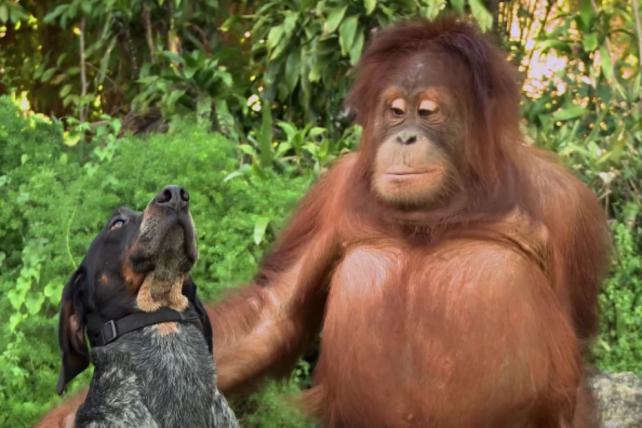
Video Marketing
It’s no surprise that video is now an essential part of any successful marketing strategy.
business2community.com recently revealed their Top 6 secrets of super-successful video marketing. Here’s the summary…
1. Focus on stories, not sales
The best videos are those that connect with the viewer. You can create value by telling a story. And always build trust with your audience before selling to them.
2. Use the first few seconds wisely
The average viewer’s attention span is just 8.5 seconds. That means you MUST engage your viewer as quickly as possible. Use an eye catching thumbnail to grab the viewer’s attention, and deliver an engaging hook within the first few seconds of the video to keep them watching.
3. Target relevant audiences on Facebook
Facebook allows you to target your audience based on their age, gender, location, language, and interests. Use this to your advantage, and only show your video to your specific target audience.
4. Tell your story with and without sounds
It’s important to optimize for both types of playback, as people will watch videos with and without sound at various times in their day. Optimize for sound by using a high-quality audio recording, and an engaging music track. Optimize for no sound by using beautiful visuals, text-heavy descriptions, and subtitles.
5. Include CTA’s
All of your videos should end with a call to action. This could be to Subscribe to your channel, Follow/Like your Page, Share with your friends, Comment on the video, or Check out other content. It doesn’t always have to be about making a sale.
6. Optimize for search
If you’re not optimizing your video content for search, you could be missing out on a huge numbers of views. More than 3.5 BILLION searches are performed on Google each day!
At a minimum you should:
Include keywords in your video title
Add a description to your video
and Upload a transcript of your video if hosted on YouTube
Be sure to apply these six secrets to your next marketing video 😉
business2community.com
https://cur.at/3OaMYFW?m=email&sid=qH5qkSH

Uncategorized
1) The odds of you writing an effective script yourself are low. I’ve reviewed over 160 scripts this year alone and this is what I’ve found; only 10% would qualify as highly-effective scripts from a marketing standpoint, 25% as somewhat effective, 55% as non-effective and possibly damaging to the brand, and 10% as unreadable. And only 1% of the scripts I reviewed were actually written by a professional scriptwriter. Now, when you take into consideration the time, energy and money spent developing and distributing a marketing project, it’s baffling that marketers would skimp on the very core of its effectiveness… the script.
2) You lack the proper perspective. Marketers like to load down a script with sales points or use their sales letter as a script. This only confuses and disappoints the viewer and can actually damage the brand. It’s hard for marketers to change their perspective to that of the viewer, and scriptwriters do that for them. A professional scriptwriter will help you distil the “just right” sales points you need to convey based on where you will be distributing the end product and your target audience.
3) You’re a marketer, not a wordsmith. Words can not only hold different meanings, they can also provoke different emotions. An experienced scriptwriter is also a wordsmith who will choose the “just right words” and phasing that not only conveys the proper meaning but evokes the thoughts and emotions we want the viewer to come away with. Most marketers that write their own scripts use a passive “voice”, while scriptwriters create power.
4) You write run-on sentences. Even Academy Award-winning actors cannot make them understandable.
5) You list points rather than incorporating them into sentences. Not only will you bore your audience to death, they won’t remember any of it. Yep, a list is not a script.
6) You don’t know how to use a comma. Comma’s not only told the actor to pause, they are used to bring clarity and sometimes more power to a script.
7) You don’t know when is best to use bold or italics. Both can be used in script writing to instruct the actor to which words or phrases should be stressed. Use either one or the other, but never both in the same script.
8) You over-use exclamation points or don’t use them at all. Just like boldface and italics are used to stress specific words and phrases, the exclamation point stresses specific sentences.
9) You use punctuation that has no business being in a script. Quotation marks, slashes, underlining, brackets, or anything other than what I’ve mentioned in c,d, and e, should not appear in a script.
10) You aren’t Alfred Hitchcock. Only university trained scriptwriters know how to write directions so that they’re understood by trained actors. And if you try, you will only frustrate yourself and the talent. Accept that you’re getting a marketing video produced at a small fraction of what it would cost through an agency and be ready to accept the actor’s skill at determining how it should be performed.
11) You just don’t have the time or energy to write a script. Scriptwriters are affordable on Fiverr. Most scriptwriting gigs are offered by the actors here as an extra or a separate gig. We read so many scripts and we’ve seen what works and what doesn’t, so it makes sense to get the most from your marketing budget by using us.
12) You don’t know anything about timing. Scriptwriters know how to write the text so that it can be performed and fit perfectly with the visuals. Trust me, without proper timing your project will be sub-par.
Best wishes for a successful marketing campaign!
Reposted from the Fiverr Forum

Viral Video
Is it possible to plan for and create a viral video, or does a video go viral spontaneously? Yes to both! Because the fact is, many user-generated videos are uploaded to YouTube and go viral thanks to the power of social media.
Brands should take note. They can leverage this same word-of-mouth marketing for their own video campaigns and plan for a viral event.
Is it possible to plan for and create a viral video, or does a video go viral spontaneously? Yes to both! Because the fact is, many user-generated videos are uploaded to YouTube and go viral thanks to the power of social media.
Brands should take note. They can leverage this same word-of-mouth marketing for their own video campaigns and plan for a viral event.
Sounds great, right? But, how do you do it?
HubSpot says that adding an element of humor, surprise or irony to a video greatly helps its viral potential. It also helps if your video evokes a positive emotion and shares either practical pieces of information or a good story.
To demonstrate the key elements of a viral video, here are three of the most popular video campaigns of all time.

Orabrush: Humor generates sales
Brands that use humor well are often rewarded with an increase in sales. This is because humor attracts attention, creates a positive sentiment and makes it easy to forget that we viewers are being marketed to.
However, while funny videos have great viral potential, going viral doesn’t always equate to sales.
Inc. reported on two cases illustrating the effects of funny videos put out by brands. In one instance, a startup called Orabrush created a funny promotional video about combatting bad breath. The result? There were 15 million video views and over 10,000 products sold during the first few weeks after the company published the video! Today, that video has attracted over 26 million views and Orabrush is a leading oral care brand.
In the second case, a company called EZ Grill quickly reached over 1 million views with its funny video in which it grilled up different brands of mobile phones. Unfortunately, the video didn’t translate into any meaningful sales.
Why did one funny video generate lots of new sales while the other video fizzled out?
The successful Orabrush video focused on the benefits of its core product in a funny way. While you’re laughing, you’re also thinking about your experience with bad breath (whether it’s your own or someone else’s) and how to combat it.
The EZ Grill video failed in this respect. While the video was entertaining, it didn’t show any of the benefits of the grill itself. Rather, the focus was on which phone could withstand the heat of the grill best.
The lesson? When brainstorming for your own funny video, be sure to keep your product front and center the way Orabrush did.
Always: Evoking emotion generates ROI
Humor isn’t the only emotion that has the potential to take a video viral. The brand Always proved this with its Like a Girl video campaign.
According to Ad Age, “Like a Girl takes issue with generations of playground taunts about running, throwing or fighting “like a girl,” asking, “When did doing something like a girl become an insult?’”\
Always didn’t decide on this viral video topic randomly. There is plenty of research that shows that a girl’s confidence goes into a downward spiral when she reaches puberty. According to the Institute for PR, “At this sensitive time, harmful phrases such as doing something ‘like a girl’ casts doubt on how powerful a girl can be, and can affect her for a lifetime.”
While the Always brand has long focused on confidence in one way or another, it’s never focused on empowerment. Previous ad campaigns highlighted the confidence a woman feels when she’s wearing an Always product, because of its superior performance.
With its Like a Girl campaign, the brand made a major communications shift in deciding to focus on the confidence and empowerment of the wearer instead of the product. And the brand won big because of it.
Its Like a Girl video was a smash success, achieving 76 million global views on YouTube, 4.5 billion impressions around the world and 290 million social media impressions in the United States alone. It also increased the brand’s Twitter followers by 195.3 percent.
While Always hasn’t shared any sales numbers, it’s safe to say that this video generated an ROI for the company. After the initial rollout of the campaign, Always went on to purchase expensive ad space during the Super Bowl to run the video. That should tell you all you need to know about this video’s ability to have produced a return.
Ken Wheaton from Ad Age said that the video was smartly targeted by focusing on young girls because “Always would like to reach young women having their first period and/or their moms — especially since the first brand settled upon in this category tends to be the last brand settled upon. A message such as this is appealing to both mom and daughter — and probably dad as well.
“And it’s squarely on brand. Let’s be crystal clear here. Whatever Like a Girl is, it’s a sales pitch . . . This touching, emotional, extremely viral campaign’s main reason for being is to sell more panty liners. That’s it’s job.”
The lesson? When creating your own viral video, be sure to focus on your target audience members and consider how to evoke a specific positive emotion from them.
GoPro: User-generated content takes flight
GoPro proved that the best video content isn’t always produced by a leading team of ad agency execs. The proof? The brand’s video Fireman Saves Kitten.
Back in 2013, a firefighter named Cory Kalanick was wearing a GoPro on his helmet when he rescued and revived an unconscious kitten. Kalanick then uploaded the video to YouTube, where it went on to generate 1.5 million views in just a few weeks.
GoPro took notice of the viral potential for Kalanick’s video and obtained the rights, Later in the year, it recut the video, added its logo and released the video on its own YouTube channel, where it achieved five million views in just one week!
Clearly, it’s impossible to plan a campaign around user-generated content as you’ll never know when an opportunity like this one will arise. However, staying aware of the many ways your products are being used, and being ready to jump on an opportunity like this is something you can do, starting today.
The lesson? Set up Google Alerts as well as social media alerts for your brand name. Also, track branded hashtags so that you know when people are posting about your company and products. Keep one eye open at all times to look for your big Firefighter Saves Kitten type of opportunity!
Getting started
While it wouldn’t be wise to sit around waiting for a great piece of user-generated content to come your way, there are things you can do today to create your own video that has viral potential.
Your goal should be to come up with a good catch, something that will make people pause, watch and feel something. They might laugh or they might be brought to tears. Either way, if your video can evoke a positive emotion that can be tied back to your brand, you’re on the right path.
Get Your Valuation

Do you know what your business is worth?
Discover and monitor your business value in real-time! »Legend
NATHAN CHAN
Nathan Chan is the publisher of Foundr Magazine, a digital magazine for young, aspiring and novice stage entrepreneurs. He has had the pleasure of interviewing rock star business leaders to find out what it takes to become a successful…
Read more

Video Strategy
Understanding psychology will help you create successful video content
In a 2016 study of marketing professionals and online consumers, 88% of marketers stated video was an important part of their marketing strategy, while 69% of online consumers said they would rather watch a video than read a product explanation. In a different study, statistics prove that businesses using video grow company revenue 49% faster than companies without video content.
Why has video assumed this dominant role?
The theory
Taking a psychological view of advertising, there are two key ways that ads can be persuasive: the central route and the peripheral route.
The central route refers to situations whereby the consumer is invested, in the sense that they want or need the product, and thus can make thoughtful decisions based on facts and logic.
The peripheral route is where the receiver does not think carefully about the communication itself, and instead makes decisions based on superficial stimuli, also known as “cues.” Cues can include colors, music, storytelling and more. In the peripheral route, content and facts may be ignored or overlooked.
Video — a success story
Video ads generate far more emotional cues than a photo can, with the ability to tell an extensive story and appeal to a wider range of senses.
Videos trigger the central route for some people and the peripheral route for others, two avenues that eventually converge with a common goal: to sell a product or service by selling an underlying idea. It’s ideas that evoke specific emotional responses: joy, pride, sadness, anger, laughter, nostalgia, etc. These emotions fuel passion, and drives human behavior while building a brand relationship with an audience.
Armed with this insight, the question becomes: are content directors equipped with the tools they need to tell the product’s story in a video format that uses both avenues to reach the hearts and minds of their target audience? This becomes even more challenging given that the average attention span for video viewers is 8.25 seconds, down from 12 seconds in 2000.
Contrary to popular belief, a video advertisement does not need to go viral to be successful. But studying videos that do go viral is useful to assess which tactics best influence consumers.
Google‘s “Friends Furever” video spot for Android features a series of unlikely animal friends frolicking together, set to upbeat music. Animals have little relevance to mobile phone operating systems, but the use of cute critters seems to be a foolproof tool to grab attention. This video now has over 27 million views on YouTube. By targeting users emotional soft-spots, Android’s video marketing team successfully employed cues that created a positive effect on consumers — letting emotions, not facts, drive attitudes towards the product.
Intel’s five-part series titled “Meet the Makers” shows inspirational stories of people using their products in innovative and exciting ways to change and even save people’s lives. These videos display the efficacy of flagship Intel products by showcasing both courage, creativity, determination and positive uses of technology in the world, with a very emotional and human touch, appealing to both logic and sentiment. The result? A successful marketing campaign.
A basic how-to Marketing Strategy
By applying psychology to video advertising, we can begin to map out a marketing strategy for preparing video content. First, audiences must be identified along with both the facts and emotions that drive them to make decisions. Is the target audience retirees? How should they be approached differently than, say, millennials? Once we have discerned our target audience and what makes them tick, we can construct a story that will wind them up and get them going. Colors, music, sound, design and other technical aspects must then be carefully crafted to fit the story and stimulate the senses of the targeted audience.
Ultimately, psychology provides the perfect tool for creating a successful marketing video.
Source: The Psychology of Video Advertising | DigitalNext – AdAge











Recent Comments